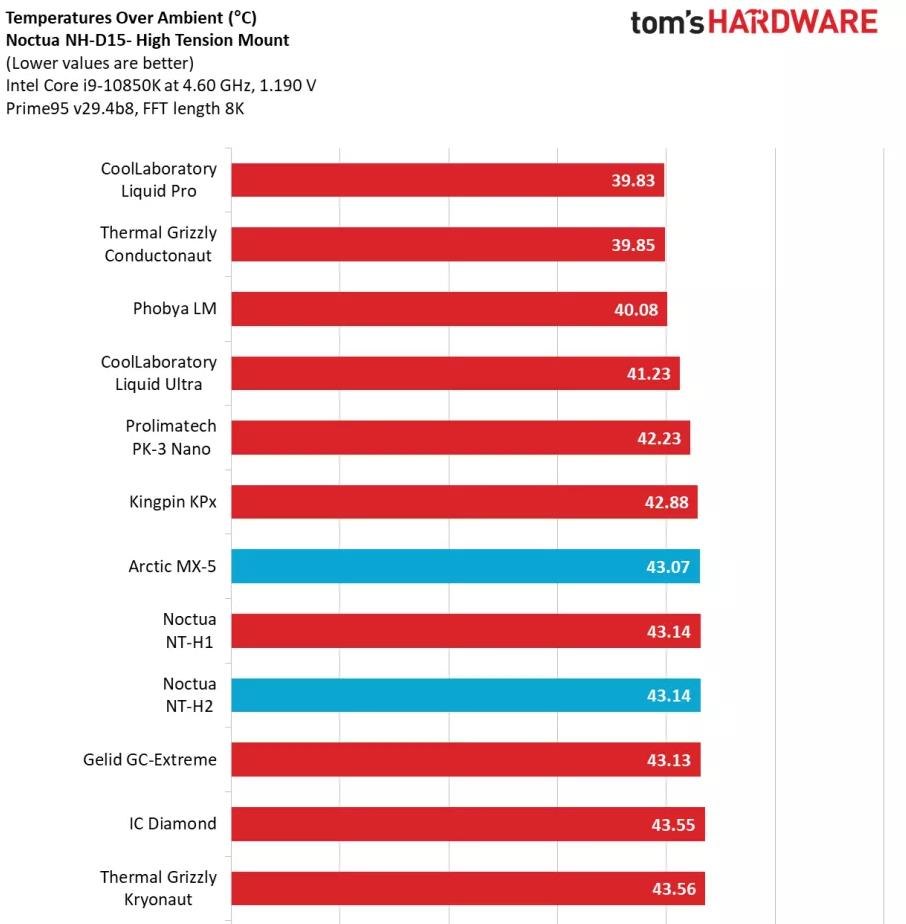Be careful with using liquid metal with aluminum on your PC, danger of explosion!
The liquid metal is the alternative to the most famous and coveted thermal paste. We can find it in thousands of equipment, always designed to offer the best possible cooling thanks to its impressive heat transfer. Sony even uses it on their PlayStation 5! So it may seem tempting to use liquid metal as an alternative to thermal paste on normal equipment, with an aluminum heatsink. In this article we tell you why it is a bad idea.
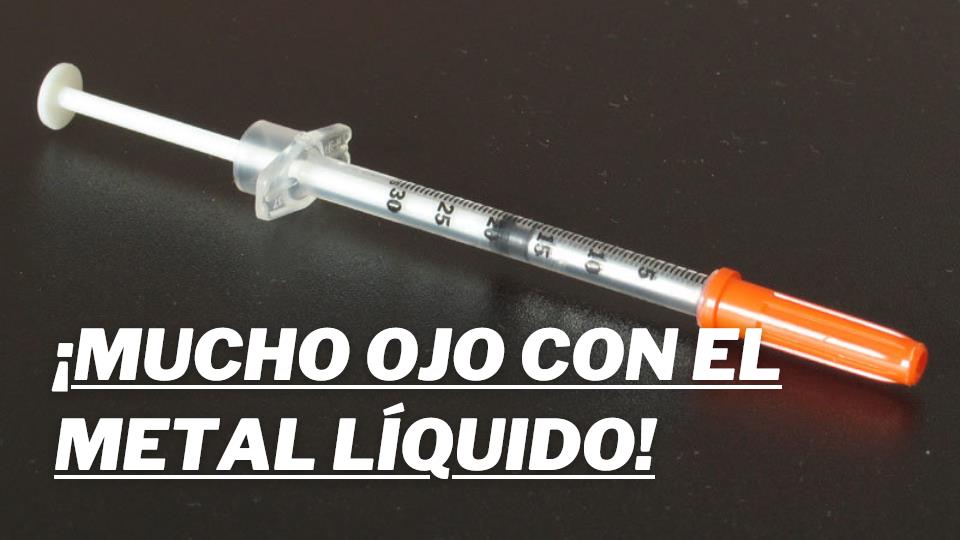
Index of contents
Let’s remember the usefulness of thermal paste
Let’s start by briefly recalling why thermal paste is used between the heatsink and the processor of our computer. Surely you already know, but we want to clarify it so that anyone who enters this article understands it perfectly.
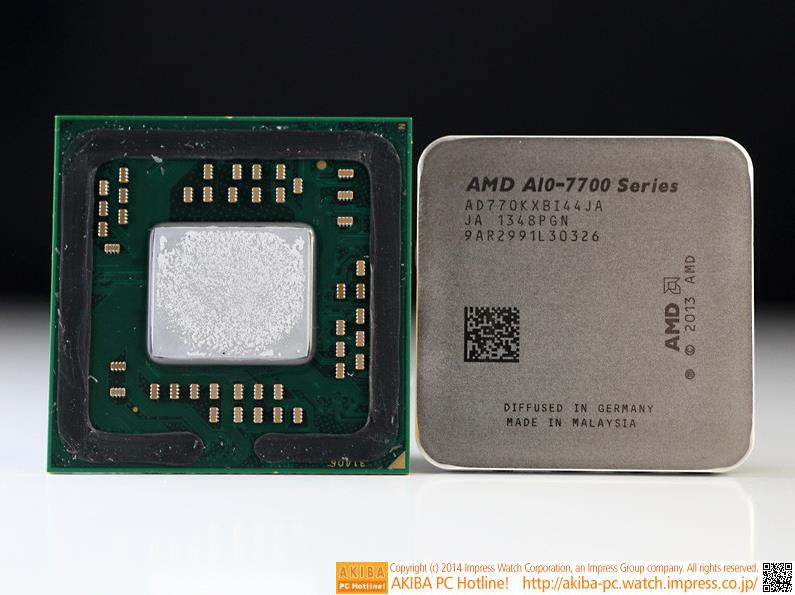
When we place a heatsink or liquid cooling on our processor, it will happen that between the metal plate of the CPU (called IHS or Integrated Heat Spreader) and the base of the heatsink there will be microscopic air holes that make it difficult to transfer heat from the processor to the heatsink. , worsening cooling.
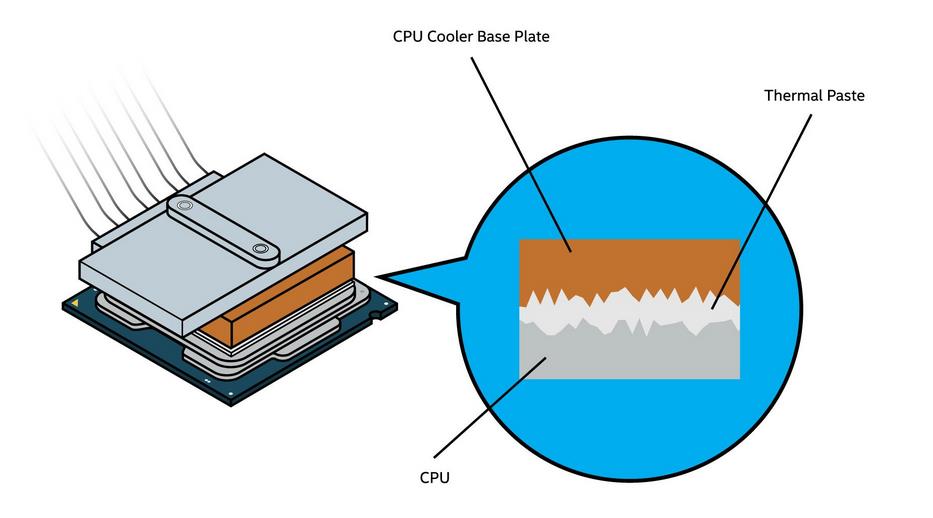
This is where thermal paste comes into play: this compound manages to “fill in” all those little holes, so that there is no longer air involved, but something much better: a material with high thermal conductivity. Not all thermal pastes are the same: there are many types, different models of all prices, materials, etc.
Well, now we will see why there are many people who opt for liquid metal as an alternative to conventional thermal paste.
Liquid metal as a more powerful cooling alternative
The great advantage of liquid metal, and the reason why it is widely used in CPUs, is its extremely high thermal conductivity. To give us an idea, Thermal Grizzly Conductonaut liquid metal is capable of conducting 73 W / (m · K) , while Kryonaut thermal paste, from the same company, reaches 12 W / (m · K). Come on, liquid metal is at least 6 times better conducting heat than thermal paste.
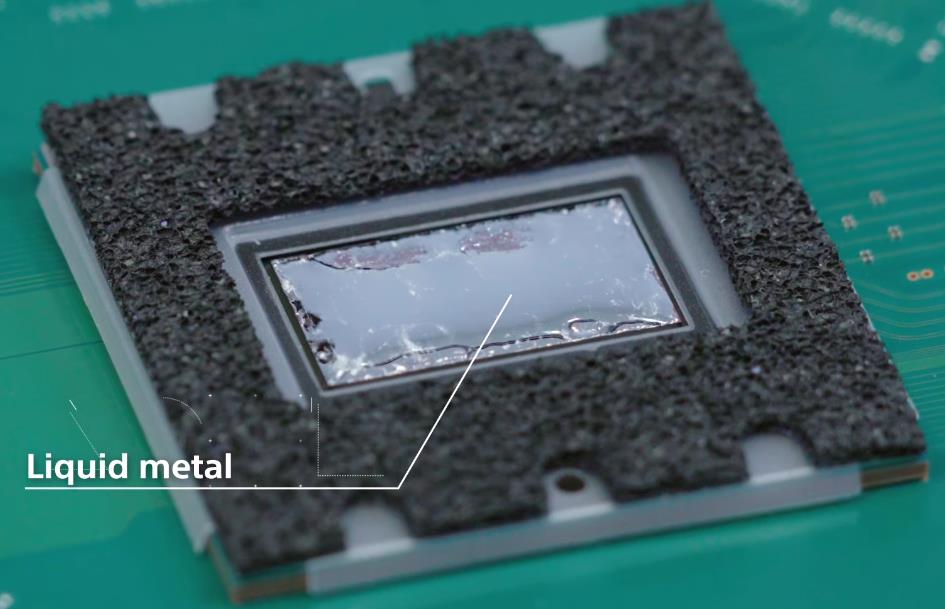
Therefore, it is understandable that we come up with the idea of cooling a PC with liquid metal, even though we use a CPU without overclocking (or with moderate OC) with a normal heatsink or AiO liquid cooling.
Let’s start from the fact that a thermal paste change does not have to be vital. In many cases, it will only mean a temperature difference of 1 or 2 degrees, totally negligible. Take, for this, the data reference of Tom’s Hardware, which has done several tests with different types of pasta and an i9-10850K processor .
Let’s keep in mind Thermal Grizzly’s liquid metal and its thermal paste (Conductonaut and Kryonaut): we see that under liquid cooling there is a difference of 3.29 degrees, and under air it is 3.7 degrees. Be careful, because they are notable differences, but the point is that they are not of vital importance when we are not talking about applying severe overclocking.
So, a priori we could think the following: “There are not many differences for a normal PC, but I am going to use liquid metal because I do not mind spending something more in exchange for having the best cooling.” However, let’s see now why that is not such a good idea, because there are significant risks to consider when using it.
The big risks of liquid metal
Using liquid metal has so many implications. But we are going to limit ourselves to talking about which are the two most important risks associated with its use.
Electrical conductivity, obvious but avoidable
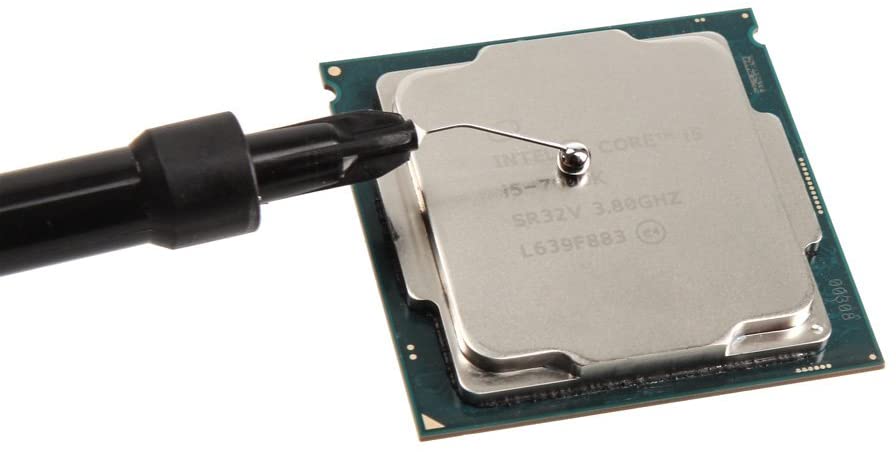 As its name indicates, liquid metal is nothing more than an alloy of different metals, which we will detail in the next section. Then we can already know for sure that it conducts electricity, like any other metal.
As its name indicates, liquid metal is nothing more than an alloy of different metals, which we will detail in the next section. Then we can already know for sure that it conducts electricity, like any other metal.
A thermal paste can also conduct electricity, but it is something much less common, most do not, so we do not have to worry about some paste “escaping” out of the IHS of the CPU or its direct application area. . If the liquid metal leaks through the motherboard, we can cause a short circuit with fatal consequences.
We have to combine this with the fact that liquid metal is not anywhere near as easy to apply as thermal paste. That is, to the usual care that we must pay to the application, we must add the care to do it with the correct technique.
Surely you already knew about this risk, which is still something manageable with skill and care. But this article is not oriented to warn you only of this, but we are left to talk about the terrible combination of liquid metal and aluminum heatsinks.
Liquid metal and aluminum, or how to break your PC within hours of mounting it
Let’s start by seeing what exactly we are talking about when we refer to liquid metal. That is, what materials make it up.
Taking Gamers Nexus data as a reference , liquid metal is a eutectic alloy , by which solids are combined so that their melting point is lower than that of each of the components separately, thus making the metal liquid. at room temperature. Used gallium, indium and tin, which is known as galinistano.
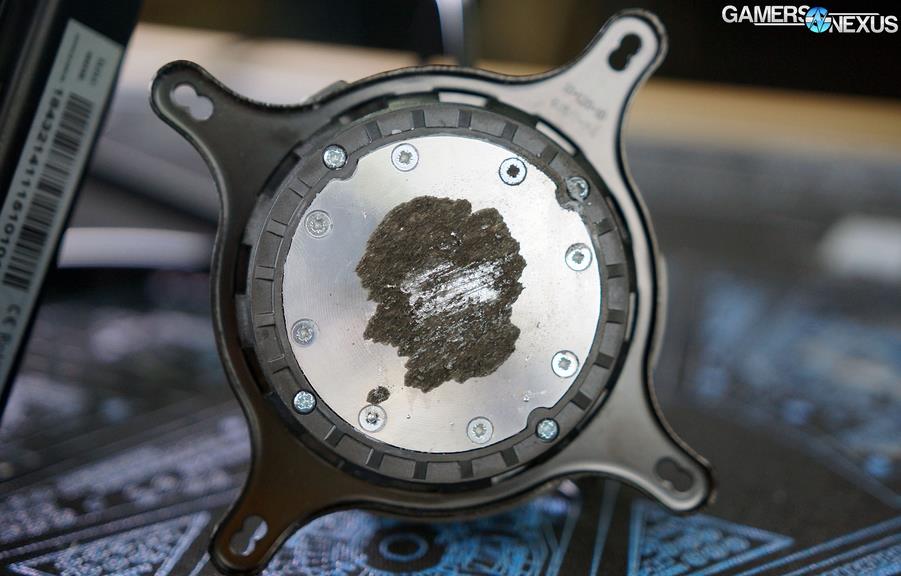
Galinistane is a trademark, and this alloy melts at -18ºC, so at any room temperature it will be a liquid metal. But when we talk about the liquid metal tubes that we find in the market, we are not exactly facing Galinistane: the proportions and melting point vary, but at least we already know what the 3 components of (almost) any liquid metal tube on the market are. .

The problem? That aluminum is “highly soluble in gallium” and forms an alloy with it. Gallium penetrates aluminum, with potentially fatal consequences. We quote the famous overclocker Der8auer, who details it in the article that we linked before:
Aluminum has enormous and easy solubility in gallium, which is why gallium forms an alloy with aluminum. In general, aluminum is a very reactive metal, but this is usually not the case because aluminum also quickly forms an oxide layer that protects it. Gallium can pass through the oxide layer and form an alloy, which makes aluminum very brittle. Aluminum also reacts strongly with water, for example. So if you have rust-free aluminum powder and you expose it to air it is extremely explosive. The humidity in the air will give the aluminum O2 atoms to form aluminum oxide, so the result of the reaction is hydrogen,being then very explosive. Being an exothermic reaction, it can simply explode …
Come on, that Der8auer (whose note is very clear) warns of the great danger of the reaction of aluminum and liquid metal, to the point of exploding. Imagine what it could do to a newly assembled PC: things could end badly.
It should be noted that the effect on the nickel used in the IHS of the processors is scarce, and the same with copper (although it depends on the liquid metal, be very careful): they generate a noticeable stain that hardly goes away, but should not cause problems with the refrigeration.
Use an aluminum heatsink, apply liquid metal, and watch the fatal consequences
The consequences that we see in the images of Gamers Nexus are a trifle, compared to what can happen.
Because of course, that the base of a heatsink can corrode is something that could be considered “acceptable”, in the sense that it will reduce the cooling of the equipment, but we will simply realize it and learn the lesson. Now what if the consequences are worse?
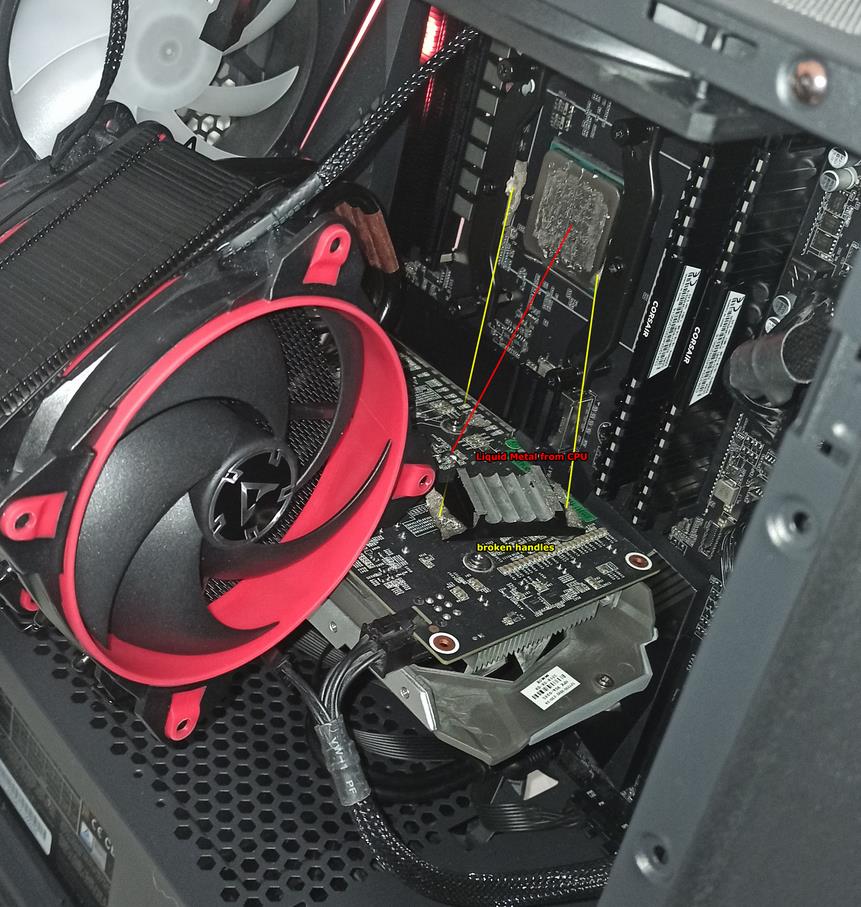 A few months ago we saw a comment about a “horrendous experience” with an Arctic heatsink, from a user who blamed the brand because the heatsink bracket broke 2 hours after installing it, throwing the heatsink on the graphics card, a blow that could be “deadly” to her. A PC saved by the hood, we already see the forcefulness of the images. Was Arctic to blame?
A few months ago we saw a comment about a “horrendous experience” with an Arctic heatsink, from a user who blamed the brand because the heatsink bracket broke 2 hours after installing it, throwing the heatsink on the graphics card, a blow that could be “deadly” to her. A PC saved by the hood, we already see the forcefulness of the images. Was Arctic to blame?
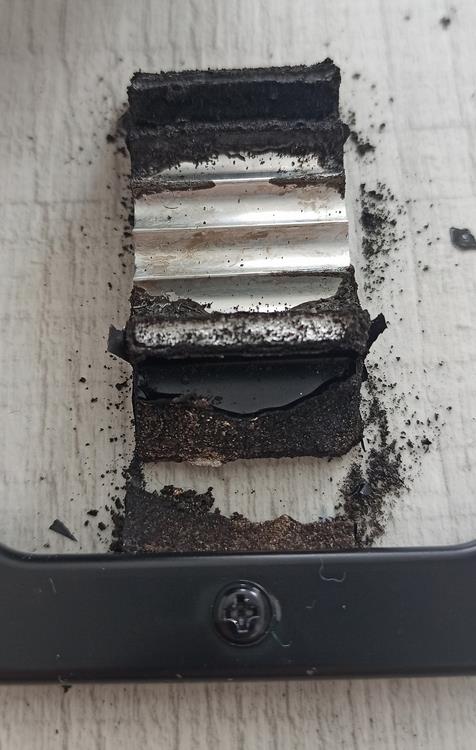 Well not at all. Despite the initial reluctance of the user, everyone began to clearly warn him that the problem was that he used liquid metal instead of a normal thermal paste, as he himself indicates in the images.
Well not at all. Despite the initial reluctance of the user, everyone began to clearly warn him that the problem was that he used liquid metal instead of a normal thermal paste, as he himself indicates in the images.
What we see is nothing more than the effect of the liquid metal “eating away” the aluminum: starting from the base of the heatsink, it ended up spreading to a fundamental point for the structural integrity of the heatsink, causing it to break. All in a matter of two hours! It is not a corrosion that takes months, it is a very fast and very devastating effect.
The worst of all? That we are not talking about a “common user”, but rather a person with hardware knowledge (just see how he analyzed an AMD Ryzen 5600G from the inside ), and that according to him he was ” aware that liquid metal should not be used in aluminum «. Despite his apparent care, the liquid metal seeped through the aluminum parts of the coldplate, resulting in that fatal tear.
The moral is that the danger of liquid metal is immense, you have to know if the refrigeration is adequate for its use, and apply it with tremendous care.
Whoever warns is not a traitor: manufacturers warn of the use of liquid metal and aluminum
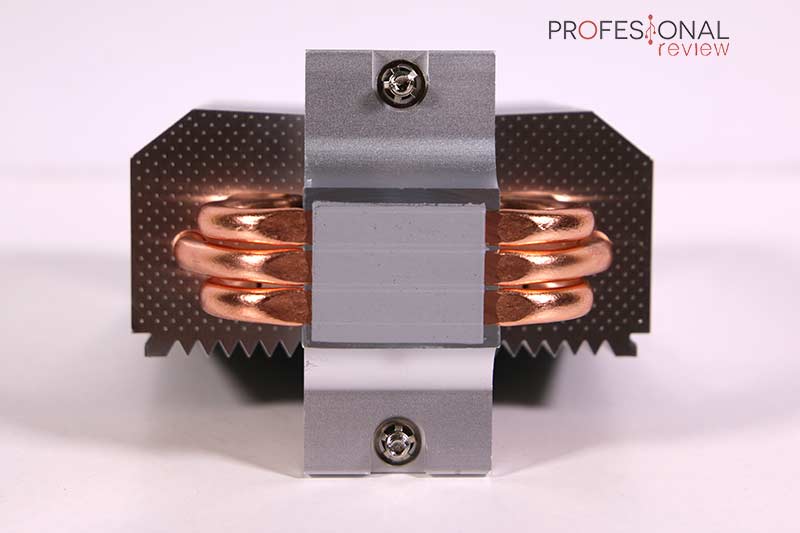
Keep in mind that manufacturers report quite clearly that liquid metal should not be used with aluminum involved, and we insist that the saying “who warns is not a traitor” is very present here. Let’s see what Thermal Grizzly indicates with great clarity:
Conductonaut Liquid Metal Thermal Paste should NOT come into contact or be used with aluminum surfaces and UNDER NO CIRCUMSTANCES should it come into contact with components that conduct electricity.
CPU coolers with an aluminum cold plate cannot be used. Instead, we recommend using copper, nickel, or silver coldplates. […] Skylake and AMD CPUs have a large number of contact points that should be covered with adhesive for safety reasons.
Come on, Thermal Grizzly tells us with great clarity that under no circumstances should liquid metal and aluminum be in contact. Also clarifying that no coldplate can be made of aluminum, and we are precisely talking about the part where contact is made with the CPU. In many heatsinks, copper and aluminum heatpipes are combined in this coldplate.
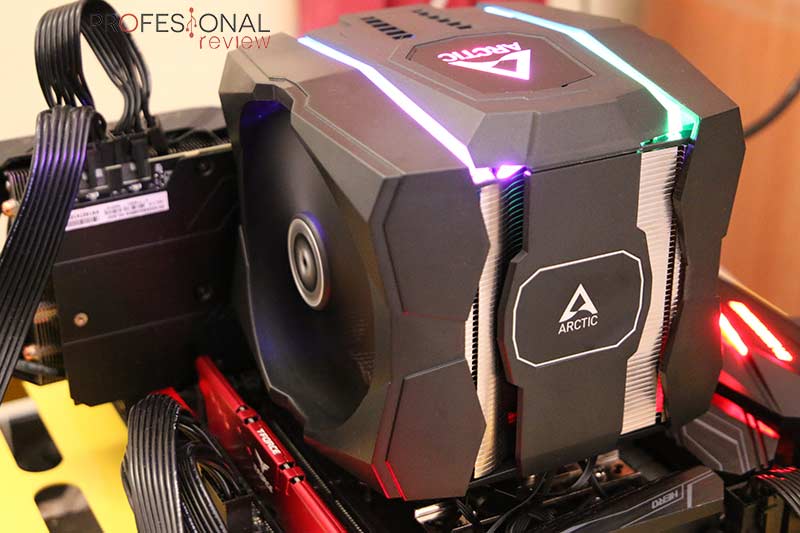 In addition, they also clearly tell us that the electrical conductivity of liquid metal can be a problem with today’s CPUs, and they highlight the need to cover some “touch points” with adhesive.
In addition, they also clearly tell us that the electrical conductivity of liquid metal can be a problem with today’s CPUs, and they highlight the need to cover some “touch points” with adhesive.
We also have air-cooled heatsink manufacturers clearly warning of liquid metal issues. Arctic couldn’t be clearer:
Our heatsinks should never be used with liquid metal (such as Thermal Grizzly Conductonaut), as they can cause strong oxidation when they come in contact with aluminum and copper. The base can be damaged to the point of material failure.
Do you really need liquid metal?
Another important issue is to remember that liquid metal is something necessary only in cases of quite severe overclocking, and this in no case covers the use of an air-cooled heatsink, but rather is something to do with custom liquid cooling or, like a lot, a graphics card.
In addition, even making sure that you will not have any problems in terms of materials, you still have the great challenge of electrical conductivity. Have you ever had some thermal paste “seeped” out of your processor heat exchanger? Or in the socket? If you use a thermal paste that does not conduct electricity, as are most of the options on the market, nothing will happen to you. Liquid metal is an electrical conductor, and we can cause a real disaster with our PC.
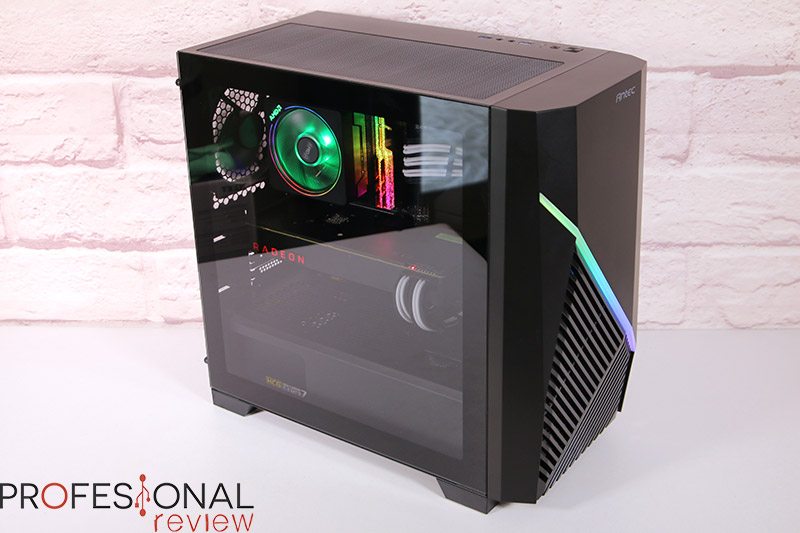 We must always bear in mind that thermal paste is not that important , and even cooling is not that important , as long as we talk about “normal” equipment, without severe overclocking. An average gamer PC, no matter how much it has an i9-11900K or a Ryzen 9 5900X, does not need liquid metal by far, it has more than enough with a good heatsink or liquid cooling and a decent thermal paste .
We must always bear in mind that thermal paste is not that important , and even cooling is not that important , as long as we talk about “normal” equipment, without severe overclocking. An average gamer PC, no matter how much it has an i9-11900K or a Ryzen 9 5900X, does not need liquid metal by far, it has more than enough with a good heatsink or liquid cooling and a decent thermal paste .
In summary, it is not worth exploring the dangers of liquid metal at all, unless we have the necessary knowledge (or the desire to learn) about a more professional overclocking.
Final words and conclusion: liquid metal and aluminum are a fatal combination
Using liquid metal instead of thermal paste is absolutely tempting, considering that its thermal conductivity is immense. A good liquid metal conducts heat 6 times more than a good thermal paste.
However, the immense risks associated with the use of liquid metal must be taken into account. We are not only talking about its electrical conductivity, which can obviously lead to short-circuiting the motherboard or the CPU if we apply it wrong (which is also more difficult to apply). In reality, the most important risk is in its relation to aluminum.
Aluminum is a tremendously reactive material, but it forms an oxide layer that protects it. Metals such as gallium, which is essential in any liquid metal tube, are able to penetrate this oxide, causing incredible brittleness in the aluminum. In turn, it reacts with moisture in the air, leading to a chemical reaction that is even considered explosive.
In practice, the effect that we will have if we use liquid metal on an aluminum surface is that it ends up “eaten away”, and if for example it is a heatsink, we will reach structurally vital points and cause the base of the heatsink to break. Come on, the operation can lead us to run out of equipment in just a few hours.
We recommend reading our articles:
- Liquid cooling in PC: this is its maintenance
- Undervolting your graphics card: Is it a good idea?
- Looking to cool your CPU? Find out if the LED heatsink is the best option
- 100% passive computer or without fans. Is it possible?
As we have reviewed in the last section of the article, thermal paste is not as important as it seems, in the sense that a computer without excessive overclocking should not have any problem with a quality standard paste, such as the Arctic MX-4. . It is totally unnecessary to risk using liquid metal if we do not have enough knowledge, and we do not invest time in making it worthwhile.
Summarizing:
- Don’t even think about using liquid metal with an air dissipator, especially if its “cold plate” (the base) is made of aluminum or of the “direct contact” type, because between the copper “heatpipes” there will be aluminum.
- In a liquid cooling or graphics card, two factors must concur:
- Sufficient knowledge about liquid metal, the material where it will be installed, its correct application, etc. No experiments.
- Justification of the need for liquid metal, for example to perform severe overclocking (without liquid nitrogen, as it would take the metal below its melting point).


Last updated on 2021-09-16
If none of this is true, use a good thermal paste like Noctua NT-H2 or Arctic MX5, and voila.
Has it ever occurred to you to use liquid metal with an aluminum heatsink? Did you already know the risks of corrosion that it carried? Leave us your comments!




